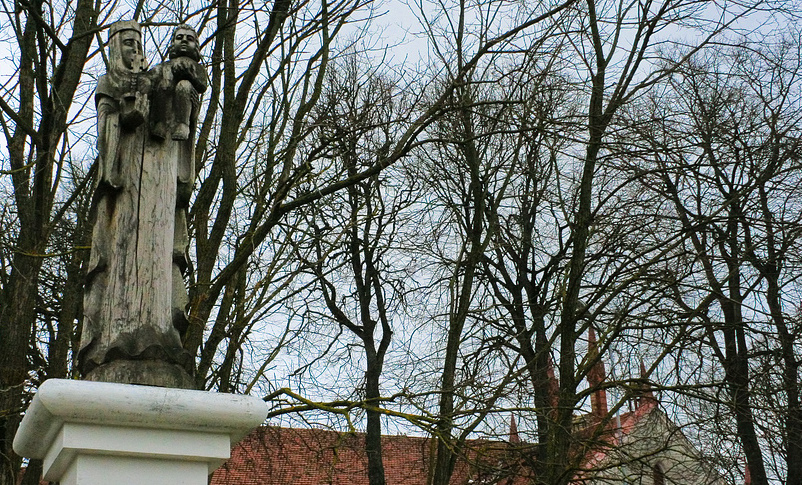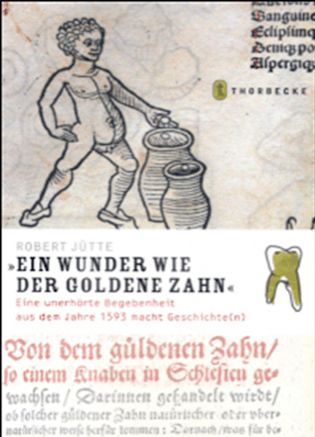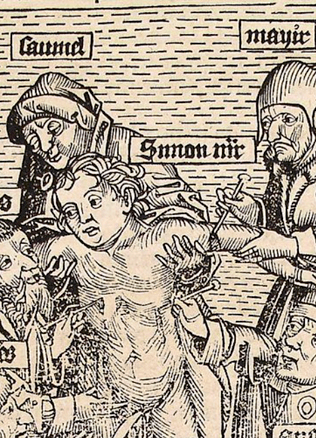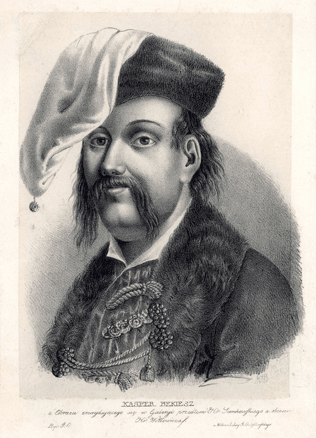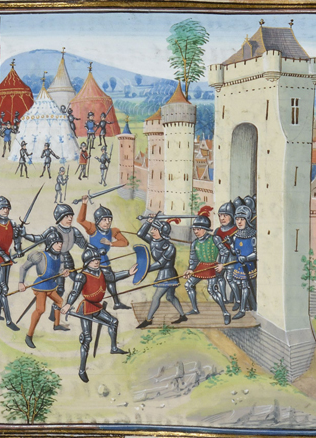Kęstutis and Birutė
The most ancient times that history is able to reach back to deals with the concept of family, the closest and most intimate community of people there is. Though the differences in the forms of family were determined by time, place, and nations’ customs, in almost all cases the husband occupied the dominant role in the family. The question of survival was particularly important in those first tribes, fighting with foreign tribes for suitable spots for hunting, raising animals, and agriculture. Conflict, as were the public questions of community life, were the responsibility of men. Women were the bearers of children and caregivers of the family. They were also property that belonged to men. As every kind of property, wives were acquired in various ways.
Wives bought and kidnapped
As in the folklore of other nations, the Lithuanian folk songs that have survived bear witness to the existence of customs pertaining to buying and stealing the bride during the wedding. A more “civilized” way of acquiring a wife was a transaction with a girl’s parents that included a dowry. A family that was made as a business and not because of love for one another was a self-evident phenomenon. Marriage, as a family made with the decision of equal partners, a man and a woman, was fostered only by Christian civilization, which is why it shouldn’t come as a surprise that the situation of women in societies that were not affected by it did not change from the times of the hunters and gatherers. It was only in Western Christian civilization starting from the beginning of the 12th century that one could find a manifestation of courtesan love. Though courtesan love did not propagate family values and was for women of the high society, it pointed the relationships of men and women on a path toward equality.
Do You Know?
Lithuanian rulers did not consider the coastal lands strategically important: in 1425 Vytautas would have easily given Palanga over to Gemans if not for the timely intervention of Jagiełło. Interest in the Baltic Sea grew only starting at the beginning of the 16th century when, in the spirit of the Renaissance, they began writing the Lithuanian Chronicles with legendary tales about the Roman origins of the Lithuanians.
While in France and Germany the troubadours and minnesängers composed songs that praised the beauty of women, the pagan lands of the Eastern Baltic region valued “pragmatic” family relations: “According to an old custom, which the Prussians kept to the present-day, they bought their wives for a particular sum of money.” This was stated by Peter of Dusburg. A similar situation reigned in pagan Lithuania. Even the marriage of daughters or sisters in the ruler’s family was the job of the men, either by the fathers or the brothers. For example, around 1252 “Vaišelga made peace with Danielius and married Mindaugas’ daughter, his sister, to Švarnas.” In the Bychowiec Chronicle, it is emphasized that Vaidila became even more elevated after Algirdas’ death because Jogaila “allowed his real sister, princess Marija, to him [Vaidila].” It is typical that we do not hear the voice of the woman in such cases, as they considered such customs self-evident and needing no explanation. However, we do sometimes hear about dissatisfied men. Marija’s marriage to Vaidila “caused much anger and regret for Kęstutis due to this relative of his, Jogaila’s sister, who married her to a slave.” New research has shown that Vaidila was not a slave, but rather a well-bred noble. Though he was not someone with the status of a duke, unequal marriages did occur.
The tale of the virgin from Palanga: can we believe the quill of the chronicler?
The marriage of Marija and Vaidila was not the slap in the fact that could have angered Kęstutis. After all, he did not marry a wife with royal blood, but a descendent of Samogitian nobles: “Kęstutis, ruling in Trakai and Samogitia, heard about the existence of a virgin in Palanga, named Birutė, who according to pagan custom had promised to save her virginity to the gods and herself was worshipped by people as a goddess. Grand Duke Kęstutis went there himself, and very much liked her, because she was a very beautiful girl and clever. And he asked her to be his wife. She did not want to agree and replied that she had promised to save her virginity for the gods until death. And Duke Kęstutis took her by force from that place, and with great honour accompanied her to his capital of Trakai and, having invited his brothers, had a grand wedding together with his brothers and took the virgin Birutė as his wife.“ A typical case of bride kidnapping!
In 1582, Maciej Stryjkowski described the wedding of Kęstutis and Birutė like it was described in the Bychowiec Chronicle. He was the first author that propagated the idea of Birutė’s grave in Palanga. “And near the sea in Palanga I saw the mound myself, the proud hill of that Birutė, which even now is still named Holy Birutė Hill by the Samogitians and Curonians and even to this day celebrate her feast in a celebratory manner…”
Despite the fact that Birutė was depicted as a Roman vestal virgin in the 16th century Lithuanian Chronicles, in Strykowski’s version she is a local saint, and a number of Lithuanian historians believe that they are conveying a faithful, local tradition despite clear shortcomings.
It is only recently that there are more doubts concerning the literary license taken in the description. Thus, there is a necessity to look once again at the few sources of the period.
Two versions of the duchess’ fate
Kęstutis’ wife, who is not mentioned, ended up in historical sources in describing tragic events. In a complaint from 1390, Vytautas accused Władysław II Jagiełło of killing his parents. In the chronicle of Wigand of Marburg that was finished at the end of 1394 it was noted that in 1382, Kęstutis was strangled, Vytautas was imprisoned, and his mother was drowned. The violent death of Vytautas’ mother is the most believable version, despite the fact that in 1418 in Konstanz, with conflict having arose between the Germans and Poles, the latter explained that Vytautas’ mother lived until old age, and that her grave was worshipped. It seems that they did not know that Vytautas’ mother died without having become a Christian. Reliable sources do not say where these tragic events took place. What is known is that Birutė was sent to Brest Castle when the fight arose between Jagiełło and Kęstutis. This caution of hers and some of her relatives did not save her – the fight between the families occurred according to all the laws of blood revenge.
Time covered the true place of Birutė’s grave with an impenetrable shroud of secrecy.
It is doubtful that her remains would have been transported to Palanga, because at the time (and later on) this part of Samogotia belonged to the Teutonic Order. Vytautas would have easily given Palanga over to the Germans in 1425, if it would not have been for the timely intervention of Jagiełło.
Vytautas’ indifference toward Palanga showed a more serious issue: Lithuanian rulers at the time hardly cared about the sea. Jagiełło and Vytautas visited the shore of Lithuanian near Palanga for the first and last time in 1427. The political vision underwent change at the beginning of the 16th century, as the Lithuanian Chronicles were written in the spirit of the Renaissance with legendary tales of the Roman origins of Lithuanians. The importing of this Roman material was used so that Lithuania would be nestled near the Baltic Sea at least in a small section between Palanga and Šventoji. In this way, Birutė became the guardian of the Lithuanian coast.
Literature: E. Saviščevas, Žemaitijos savivalda ir valdžios elitas 1409–1566 metais, Vilnius, 2010.
Darius Baronas
